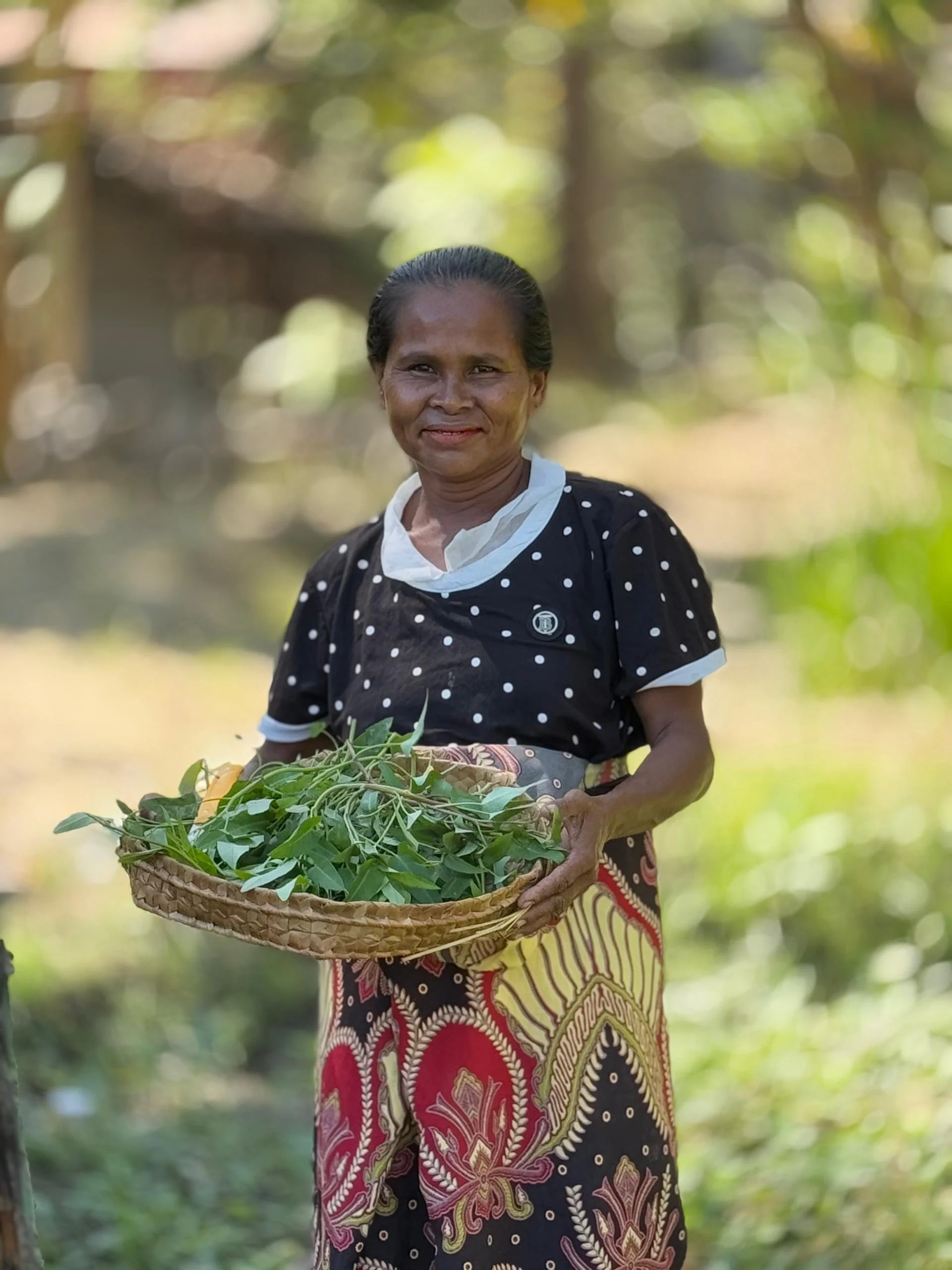When the water rose: Anticipatory Action
By Aderito do Rosario da Cunha Mambares, Communications Coordinator, Oxfam in Timor-Leste
Monica received Anticipatory Action training which meant she knew what to do when flash flooding hit her community. IMAGE Aderito do Rosario da Cunha Mambares/Oxfam in Timor-Leste
Before 2020, flooding was unheard of in the quiet sub-village of Nuslao in Bihala, Bobocase, Pante-Macassar. Community member Monica da Costa, 46-year-old, is a farmer and housewife who raises chickens, harvests corn and looks after her children. For her, everything changed on April 4, 2021.
“It was Easter Sunday,” Monica recalls. “We were planning to attend the church service, but the rain started early and didn’t stop. By 10 at night, the water had reached our knees. The children were asleep, and it was pitch black. My husband and I were awake—we had a feeling something terrible was coming.”
Within minutes, the floodwaters surged. “It rose so fast,” she says, “from our knees to our waist, then nearly to the roof. It was dark, cold, and we were all wet. My kids were trembling.” Furniture and belongings floated around them as they tried to escape. “The current was strong—we had to swim against it. Our family swam to our house to help carry the children to safety.”
When the sun finally rose the next day, Monica returned to what was left of her home. “Everything was gone,” she says. “The pigs and chickens were washed away. The corn we just harvested was destroyed. Even a sack of rice I bought, and the $70 USD I kept in my purse—all gone.” That money was for her children's schooling and to buy food and supplies. She couldn’t even recover their birth certificates or school diplomas.
Aid came in the days that followed—from Oxfam, the Red Cross, the Civil Protection Authority, the Ministry of Agriculture, President Authority of Oe-Cusse, local churches, and businesses. But the floods didn’t stop there. “Every monsoon season since then, the water comes again,” Monica says.
Change began in January 2024, when Oxfam and BIFANO came to Nuslao. “They helped us build a permanent evacuation center,” Monica explains. “Now we have four bathrooms, two big water tanks, five concrete slabs for installing tents, and a warehouse for emergency supplies—like tents, sacks, and safety boxes.”
When flooding hit again in February 2025, Monica’s community was ready. “BIFANO and Oxfam brought tents, safety boxes for our important documents and we were able to install the tents quickly. We already knew how—because of the evacuation simulations training we did before with BIFANO.” There are about 67 households in Nuslao, and there are 48 beneficiaries from the Anticipatory Action program.
Monica and her community also learned how to predict and prepare for heavy rain using local knowledge. “We now use a simple color-coded flood sign near the river,” she says. “Red means evacuate immediately, orange means get ready, and green means it’s safe. Everyone understands it—including people with disabilities.”
Thanks to training on Anticipatory Action from BIFANO and KJDS, the community has improved its emergency response. “We even mapped out the homes where people with disabilities live, so we know who to assist first in an emergency,” Monica explains.
Monica believes strongly in continuing this work. “Saving lives is the most important thing,” she says. “But we must also prevent disasters—by planting trees, protecting the soil and water, and stopping slash-and-burn practices. We can’t change the weather, but we can change how we respond.”
For Monica, the flood of 2021 was a turning point—not just for her family, but for her whole community. “Now we know how to act. We are not helpless anymore. We are ready.”


